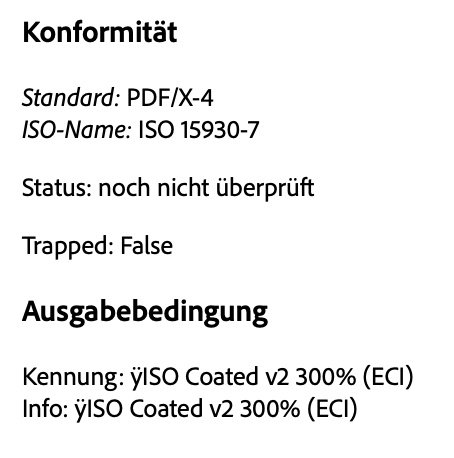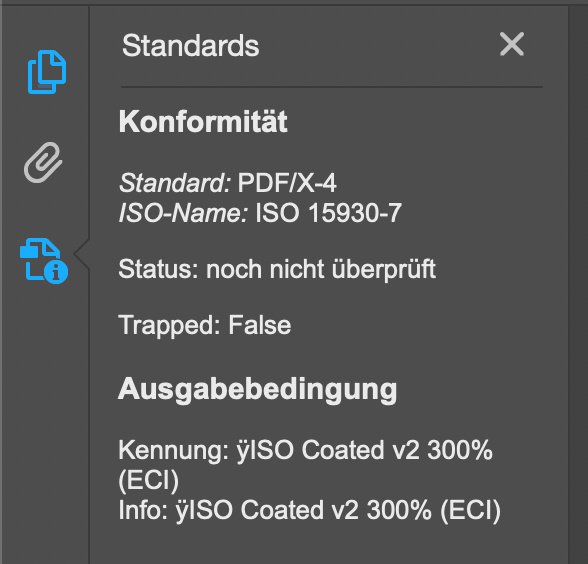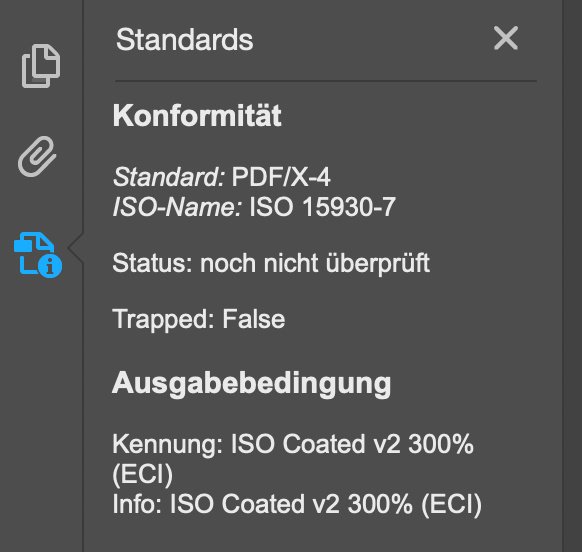-
Posts
79 -
Joined
Everything posted by Optische Ausrichtung
-
An example: Affinity Publisher was not able to handle German quotation marks correctly from the beginning of version 2. This was a very annoying bug, because with every text change you had to proofread a document from the moment the change was made right through to the end. The problem was only fixed with version 2.6. I don't remember exactly, but perhaps from version 2.3 (or about one years after the problem was recognized as such by Serif) my criticism was perhaps no longer entirely constructive.
-
Es scheint schwer zu sein und das Problem besteht nach wie vor. Nach fast zwei Jahren finde ich auch den Hinweis unter den aktuellen 2.5-Release-Notes etwas deplatziert: Keine Sorge, ich reporte diesen Bug nicht mehr. 🙄
-
Ich ebenfalls. Deswegen meckere ich ja. Die erste Regel in jeder Reklamationsabteilung lautet: „Kunden, die sich beschweren, wollen kaufen. “
-
Ja. So wie sich das Unternehmen zu diesem bestätigten Bug verhält, wird es auch so bleiben. Offensichtlich hat man keine Lust, einen derart lächerlichen (aber extrem lästigen) Fehler zu beheben. Vielleicht geht man aber auch ganz einfach davon aus, dass im deutschsprachigen Raum ohnehin niemand das Programm für ernsthafte Arbeiten einsetzt.
-
The Affinity Suite has established itself on the market without these "new features". It would be nice if it didn't lose this place now because of these "new features", wouldn't it? Interesting perspective: existing bugs remain, new ones are added ... One can only hope that the new owner can do the math.
-
At least no ridiculous bugs. And if there are, then not for years. Why I'm slowly but surely getting annoyed with Affinity: The Affinity suite could be so wonderful and cover almost 100% of my needs if Serif had a different culture of dealing with bugs. Programs that have serious colour management bugs for months on end are - I'm sorry to say - not fit for serious use. I don't need a spiral or QR code tool if the software can't set closing quotes correctly. And so on. In short, and in the spirit of the original question, it would be really nice if Serif, under new ownership, would finally work through the list of annoying bugs instead of inventing new features.
-

6 levels of grey scale
Optische Ausrichtung replied to Luke St. Everything's topic in Desktop Questions (macOS and Windows)
Add a layer "Soft proof Adjustment". Choose a Generic Grey Profile as Proof Profile. Add a layer "Posterize Adjustment". Choose 6 Posterize Levels. Export as Greyscale Image -
Vectorstyler is a terrific vector editing application and is not yet SaaS
-
It's amazing how long it takes for a company that can launch such a great software package to fix elementary bugs. @Serif/Affinity: Please don't focus on new features. Do your homework first! And please do it on time. The best software is useless if you can't use it properly. (German-speaking users in particular have to deal with really annoying bugs.)
-
Yes. The black curve is present. Duplicate this curve and set a contour width of 6 cm (yellow in the image). Select the "Expand Stroke" function. Delete the points marked blue in the image. The result is a closed curve that can be opened with the Break Curve tool, adding a point if necessary. (In the image, this is approximately the light gray part.) Delete the superfluous points. The result is the red curve. I hope you get it to work on the iPad.
-
If I understand the problem correctly, the questioner is looking for an "expand stroke function" that only works on one side of the curve. Perhaps the desired result can be achieved with the function and a little reworking. Of course, there are a few pitfalls to consider: https://en.wikipedia.org/wiki/Parallel_curve
-

revert back to 2.2??
Optische Ausrichtung replied to naomi73's topic in Desktop Questions (macOS and Windows)
Photo - https://store.serif.com/update/macos/photo/2/ Designer - https://store.serif.com/update/macos/designer/2/ Publisher - https://store.serif.com/update/macos/publisher/2/ Photo - https://store.serif.com/update/windows/photo/2/ Designer - https://store.serif.com/update/windows/designer/2/ Publisher - https://store.serif.com/update/windows/publisher/2/ -
Yes, you remember correctly. Mainly Mac, but also a bit of Windows. Unfortunately, things sometimes get worse with Affinity software. What just worked doesn't necessarily have to work after the next update. But: I think Serif is on the right track overall ... even if the mills sometimes grind very slowly.
-

Serious Color Management Issue
Optische Ausrichtung replied to Johannes's topic in V2 Bugs found on macOS
Thank you, I use the versions purchased from Affinity (as »Universal License«). Just for interest: How does the 'roll back' work? Oh, yeah, good idea. That is exactly what it is for. I could have thought of that myself, and I might try that. On the other hand, the update will hopefully come soon as well. -

Serious Color Management Issue
Optische Ausrichtung replied to Johannes's topic in V2 Bugs found on macOS
Done. Here, too, the special character is found in front of the profile name. Although "Publisher", unlike "Designer", does not show the rest of the strange behavior, a queasy feeling still remains. The character certainly doesn't belong there, and no one knows what consequences it will have in finishing or prepress. Let's hope that programmers can quickly find the place in the code where a bracket was left open or a semicolon was forgotten. -

Serious Color Management Issue
Optische Ausrichtung replied to Johannes's topic in V2 Bugs found on macOS
Perhaps a helpful hint: When I compare the PDF standards of two Affinity-Designer-PDFs exported with the profile "ISOcoated_v2_300_eci.icc" using Acrobat Reader, there is a difference under "Kennung" (Identifier?) for this profile (see screenshots). The special character "ÿ" (Lower case letter Y with Diaeresis) certainly does not belong in front of the profile name and is not found when using other profiles or in PDFs written with an earlier version of Affinity Designer. The profile used is the normal and not renamed profile from the file "eci_offset_2009.zip". Actual PDF: Older PDF: -

Serious Color Management Issue
Optische Ausrichtung replied to Johannes's topic in V2 Bugs found on macOS
Yes, I'm afraid I have no idea how to pull the chestnuts out of the fire. I've tried it with newly created user, reinstalls, selected profiles in many possible variants and much more. Something went pretty wrong there. Maybe I'll switch back to version 2.1 this weekend. The alternative might be to temporarily try replacing Designer with Publisher or switch to the Windows version. The universal license has to be good for something. Edit (and asked by the way): Is it possible to downgrade the Universal license from 2.2 to 2.1 under macOS? -

Serious Color Management Issue
Optische Ausrichtung replied to Johannes's topic in V2 Bugs found on macOS
The problem occurs with the profile "ISOcoated_v2_300_eci.icc" of http://www.eci.org/lib/exe/fetch.php?media=downloads:icc_profiles_from_eci:eci_offset_2009.zip. If the file is in the Library > ColorSync > Profiles folder, then the problem occurs with any profile that is selected. I just tried again with freshly downloaded ZIP archive "eci_offset_2009.zip".








